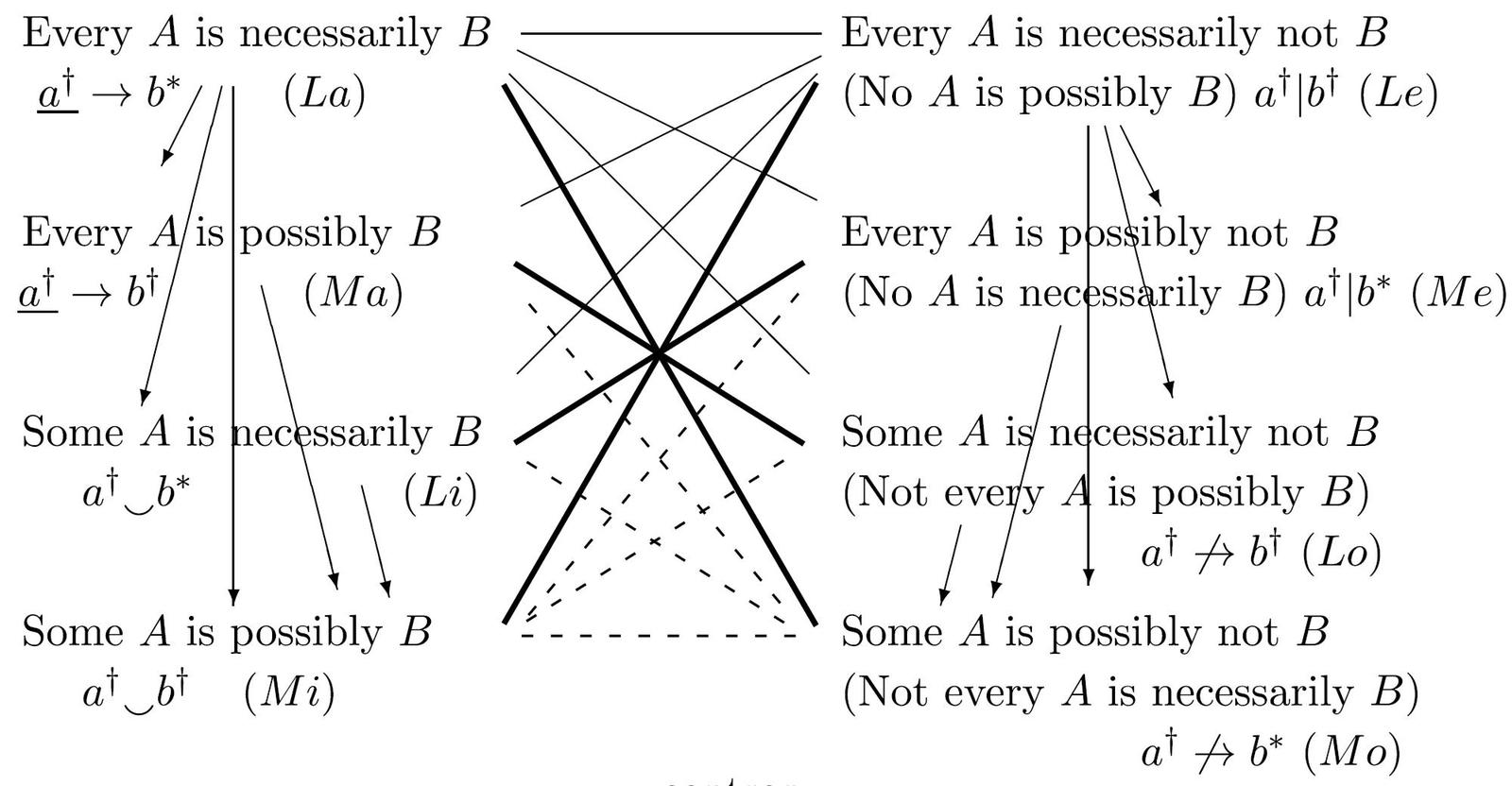

Introduction (2015), p. 39
by Read, Stephen

Copyright according to our policy
Caption
- $\textit{Representation of Buridan’s modal octagon in Thom’s notation}$
Legend

- Aristotelian family
- Buridan Sigma-4
- Boolean complexity
- 6
- Number of labels per vertex (at most)
- 4
- Equivalence between (some) labels of the same vertex
- Yes
- Analogy between (some) labels of the same vertex
- No
- Uniqueness of the vertices up to logical equivalence
- Yes
- Errors in the diagram
- No
- Shape
- Rectangle (irregular)
- Colinearity range
- 0–2
- Coplanarity range
- 0
- Cospatiality range
- 0
- Representation of contradiction
- By central symmetry
Logic
Geometry
- Conceptual info
- No
- Mnemonic support (AEIO, purpurea ...)
- Yes
- Form
- none
- Label type
- linguistic ,
- symbolic
- Language
- English
- Lexical field
- modal syllogistics
- Contains partial sentences or single words
- No
- Contains abbreviations
- Yes
- Symbolic field
- logic
- Contains partial formulas or symbols
- Yes
- Logical system
- modal syllogistics
- Contains definitions of relations
- No
- Form
- bold solid lines ,
- solid lines ,
- none ,
- dashed lines
- Has arrowheads
- Yes
- Overlap
- No
- Curved
- No
- Hooked
- No
- As wide as vertices
- No
- Contains text
- No
- Label type
- none
Vertex description
Edge description
- Diagram is colored
- No
- Diagram is embellished
- No
- Tags
- existential import
Style
Additional notes
- The symbolic notation is taken over from Paul Thom, 2003, Medieval modal systems. Farnham: Ashgate.